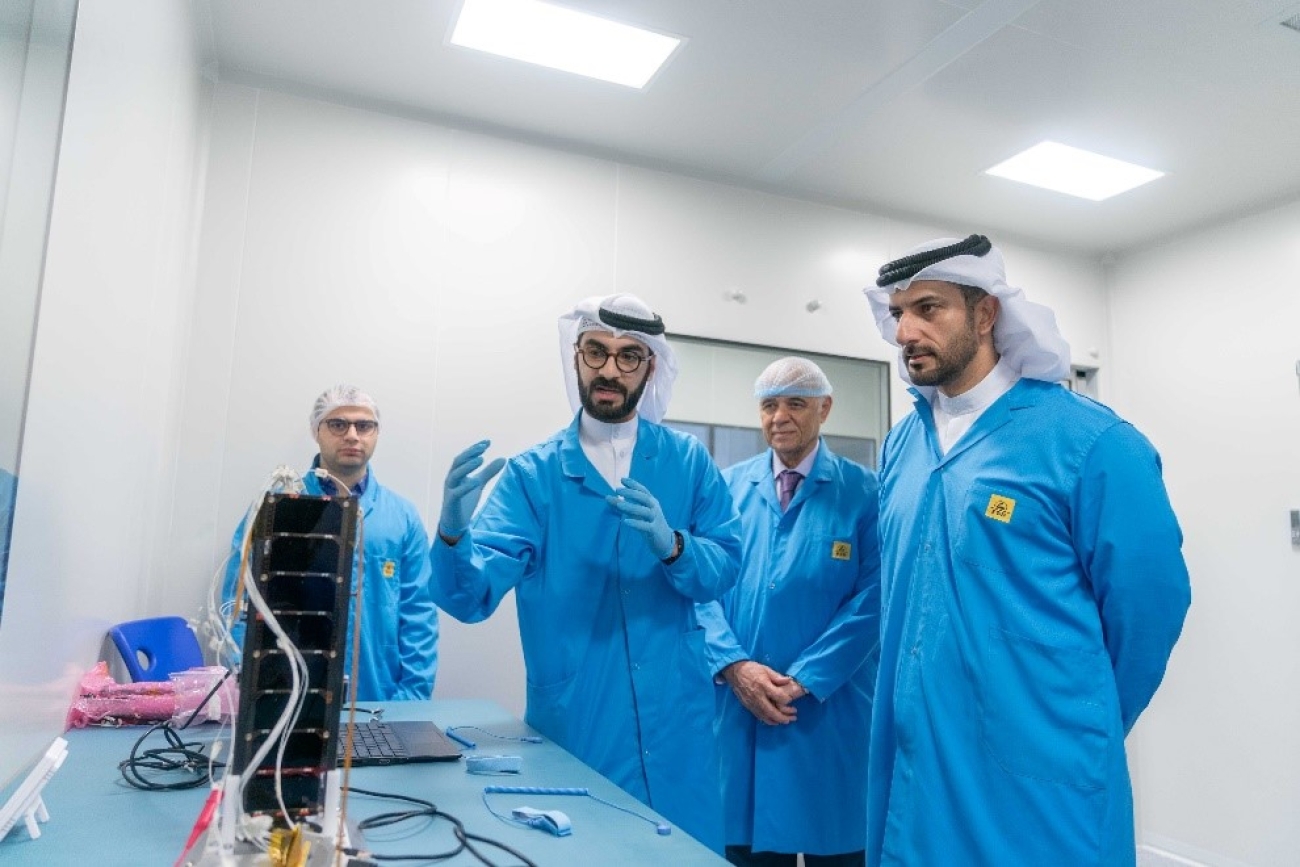His Excellency, Prof. Hamid Al-Naimiy, the Chancellor of the University and Director General of the Academy, gave His Highness an explanation of the testing. Sharjah-Sat-1 is planned to be shipped this week to the US for integration into a SpaceX rocket. The launch date is scheduled for Dec. 18, 2022.
Sharjah-Sat-1 is a 3U+ CubeSat, carrying a primary payload consisting of an X-ray detector to study bright X-ray sources in our Galaxy and a dual camera system as a secondary, remote-sensing application payload. It is the first small satellite mission of the Sharjah Academy for Astronomy, Space Sciences, and Technology (SAASST) and the University of Sharjah (UoS), developed in close collaboration with Istanbul Technical University Space Systems Design and Test Laboratory (ITU-SSDTL) and Sabanci University (SU).
Small satellites, especially CubeSats, have greatly interested universities and educational establishments due to their lower costs and shorter development time. As a result, they are the ideal learning tools to engage students in the design, testing, and operation of satellite missions, allowing them to gain first-hand experience in the space industry and engage them in the design process. The Sharjah-Sat-1 project has provided an essential basis for theoretical and hands-on knowledge of space technologies. This included extensive workshops for the team of undergraduate students from the University of Sharjah involved and public outreach programs on satellites and space systems.
Additionally, the project has created a solid infrastructure at the Academy to develop further CubeSat missions in the future. Throughout the mission, the CubeSat laboratory at SAASST has been expanding and building the necessary facilities for its success. This includes the high-performance Workstation loaded with the required software to design, simulate and analyze the mission in the space environment, the cleanroom (ISO6 certified) to integrate and test the satellite subsystems, and the ground station (VHF/UHF) needed to communicate with CubeSat once it is in orbit. Furthermore, the participating students have been trained on how to use the software and the operation of the ground station in the scope of the Sharjah-Sat-1 mission. In the end, the project's human and technological capacities and the experience gained will certainly be transferred to future projects.



